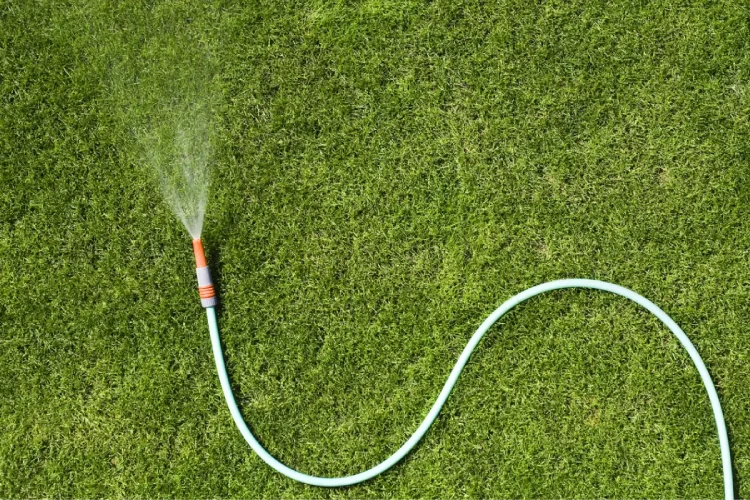
Mr. Rooter Plumbing highlights key water usage statistics and conservation tips.
|
We rely on water to keep our dishwashers running, our washing machines spinning, and our bathrooms functioning. But did you know that you're likely losing money every day to leaks and other sources of waste? And that’s not a water conservation myth.
Below, we explore water usage statistics around the globe, right down to the faucets and appliances in your home. Learn how to lower your water consumption (along with your utility bill) and understand the negative consequences of excessive water usage.
Key Takeaways:
- The typical American home uses 138 gallons of water each day. (Water Footprint Calculator)
- The average person wastes up to 30 gallons of water every day. (Washington State Department of Health)
- A faucet that leaks at the rate of one drip per second can lose almost 17 gallons in a day. (U.S. Geological Survey)
- For the average household, water leaks in the home can waste 180 gallons of water per week or 9,400 gallons annually. That adds up to money wasted on your utility bill. (EPA)
U.S. Water Usage Statistics
The United States is a large country and, as a result, consumes a considerable amount of water each year. Looking closer at the country we call home, here are some U.S. water usage statistics to consider the next time you turn on the tap.
- Americans use 101.5 gallons of water a day on average. (Philadelphia Water Department)
- Up to 30 gallons of water are wasted daily by the average person. (Washington State Department of Health)
- 56% of Americans are worried about drinking polluted water. (Gallup)
- Global freshwater consumption rates rose dramatically starting in the 1950s, but they seem to be plateauing or declining since 2000. (International Geosphere-Biosphere Programme)
- According to estimates, the United States uses 322 billion gallons of water daily. (U.S. Geological Survey)
- The 12 states of Arkansas, California, Colorado, Florida, Idaho, Illinois, Michigan, Montana, Nebraska, New York, North Carolina, and Texas account for more than half of all water withdrawals made in the United States. (U.S. Geological Survey)
- About 87% of Americans rely on public water supplies; the remaining 7% get their water from private wells. (U.S. Geological Survey)
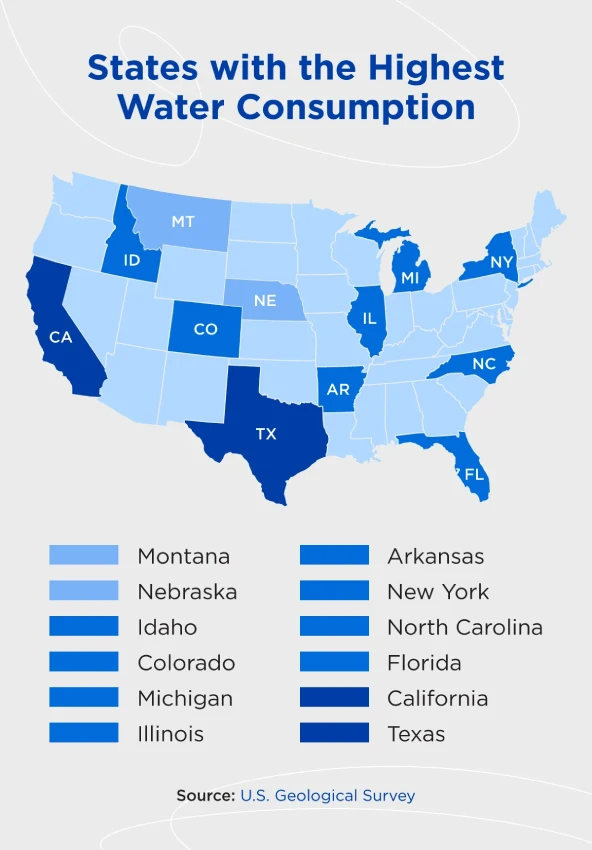
Global Water Usage Statistics
As you might imagine, the United States is not the only country where people rely on water. Here are some intriguing global water usage statistics beyond the shores of the United States. Can you guess which country uses the most water?
- Only 0.5% of freshwater is fit for drinking. (United States Bureau of Reclamation)
- We use more than 10 billion tons of freshwater a day. (The World Counts)
- 70% of freshwater withdrawals are used for agriculture, 20% for industry, and 10% for home. (The World Bank)
- By 2050, the demand for water across all applications will rise by 20% to 30%. (Nature)
- With freshwater withdrawals exceeding 760 billion m3 annually, India accounted for the greatest share in 2014. China, with more than 600 billion m3, and the U.S., with 480-90 billion m3, came next. (International Geosphere-Biosphere Programme)
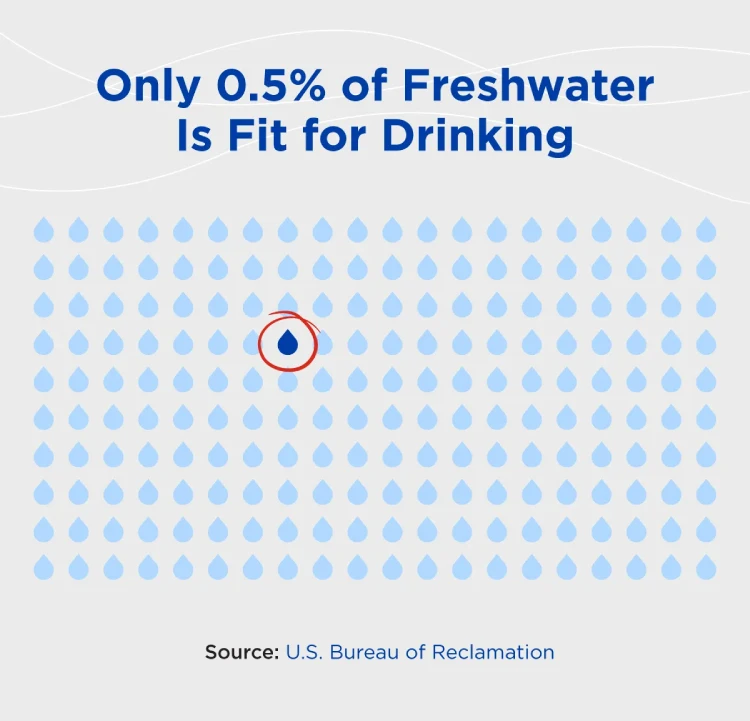
Residential Water Usage Statistics
Residential water usage statistics represent water consumption for individuals and families. Of all the statistics available, we have the greatest power to decrease water consumption within our homes. Here are statistics about water in your residence that may surprise you.
- Every day, the average American household uses 138 gallons of water. (Water Footprint Calculator)
- Adults in the United States consume nearly twice as much tap water (44 ounces) per day as children and adolescents (23 ounces). (CDC)
- In arid places, outdoor water usage may reach 60% of total household water use. On average, outdoor water use represents more than 30% of household water use. (EPA)
- If an average-sized lawn in the U.S. was watered for 20 minutes each day for seven days, it would be equivalent to taking a continual shower for four days. (EPA)
- Up to 50% of the water we use outside is wasted because of wind, evaporation, and runoff from ineffective irrigation systems and techniques. (EPA)
- Up to 25,000 gallons of water can be wasted annually by a home with a landscape irrigation system that isn't well maintained. (EPA)
- The average American home uses 31% of its indoor water supply for toilets. (The Water Research Foundation)
- Over the course of a day, a faucet that leaks at the rate of one drip per second can lose roughly 17 gallons. (U.S. Geological Survey)
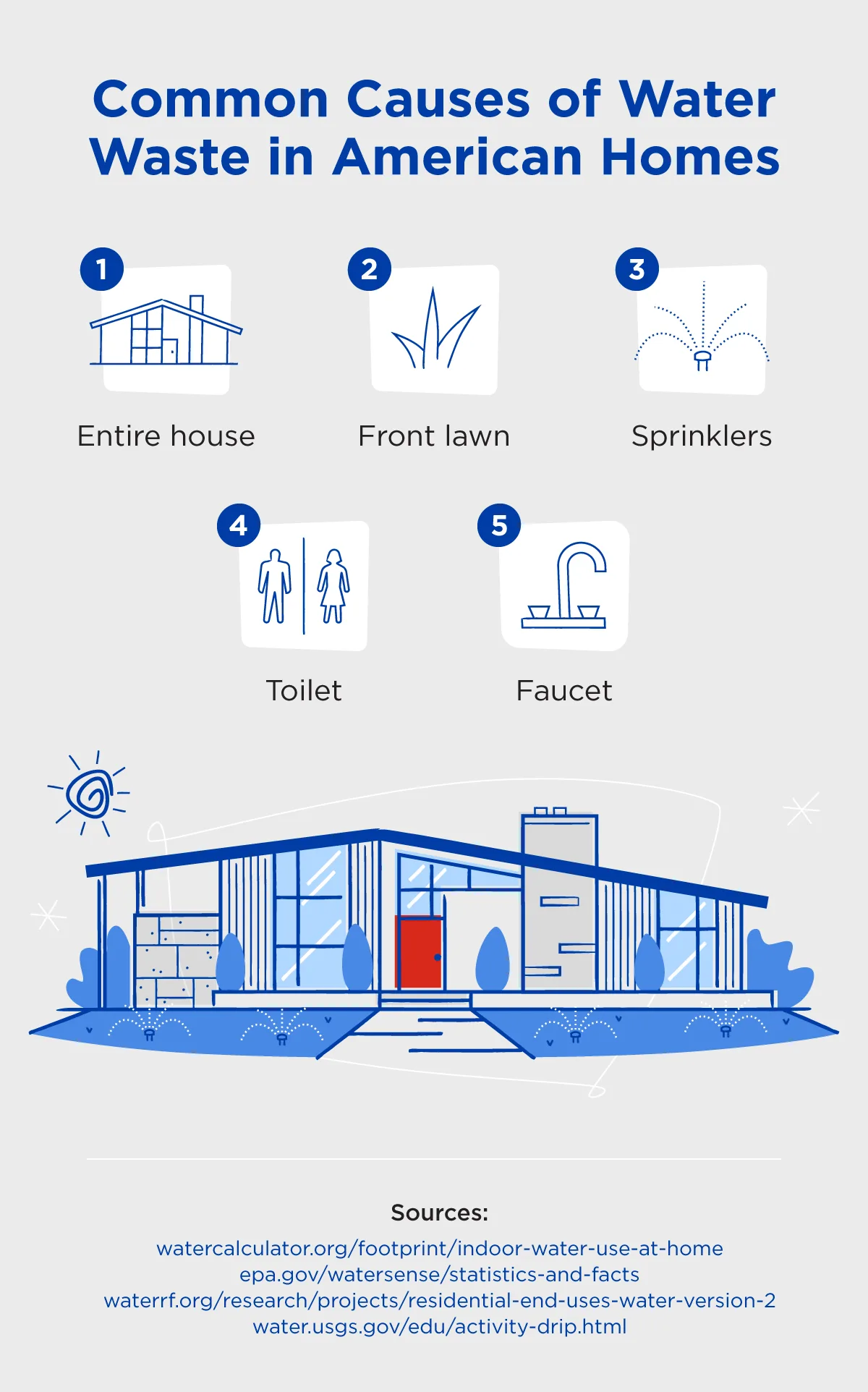
Commercial Water Usage Statistics
Residences aren't the only source of water consumption; these commercial water usage statistics highlight how much water is consumed by industry. You might be surprised to learn what two industrial sources are the world's most consequential water users.
- In 2015, irrigation and thermoelectric power remained the two biggest water users, with overall withdrawals rising for irrigation but falling for thermoelectric power. (U.S. Geological Survey)
- Between 2019 and 2020, industrial water use efficiency, the ability to prevent water waste from problems such as pipe leaks, fell from $15.87/m3 to $14.72/m3. (United Nations)
- The use of bottled water is rising by 7% globally. (Health Promot Perspect Journal)
- The combined amount of water utilized for livestock and aquaculture is 3% of all water. (U.S. Geological Survey)
- The fashion industry uses approximately 93 billion m3 of water annually, accounting for 4% of all freshwater worldwide. (Ellen MacArthur Foundation)
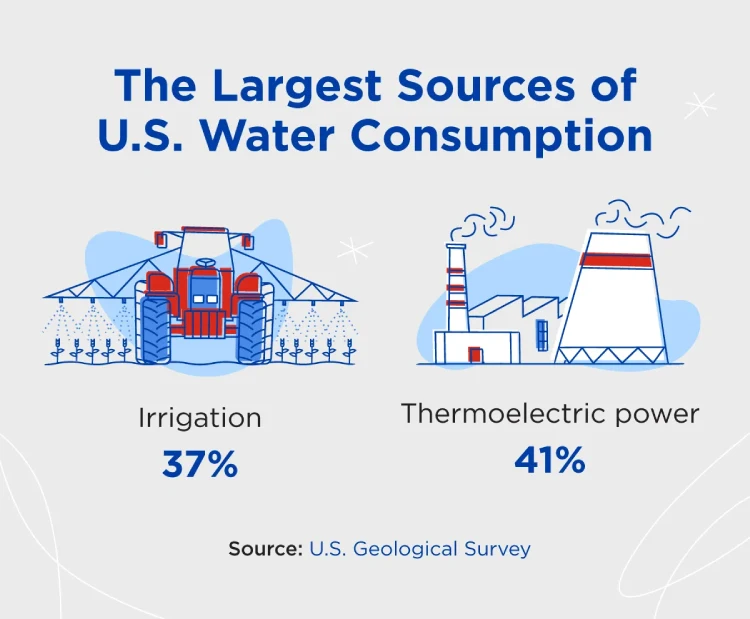
Pro Tip: If you own a business, contact the team at Mr. Rooter Plumbing®️ for commercial plumbing services. Fix up your office, clinic, or venue — don’t lose money to outdated appliances and leaky fixtures.
The Effects of Excessive Water Usage
Water is a finite resource, and consuming it without thought could lead to significant issues around the world and within your home. Here are some of the effects of excessive water usage.
- Water leaks in the home can waste 180 gallons of water each week, or 9,400 gallons yearly, for the average family — that’s money that adds up on your utility bill. (EPA)
- According to some estimations, we have surpassed the amount of freshwater the world can sustainably utilize and supply. (Science Journal)
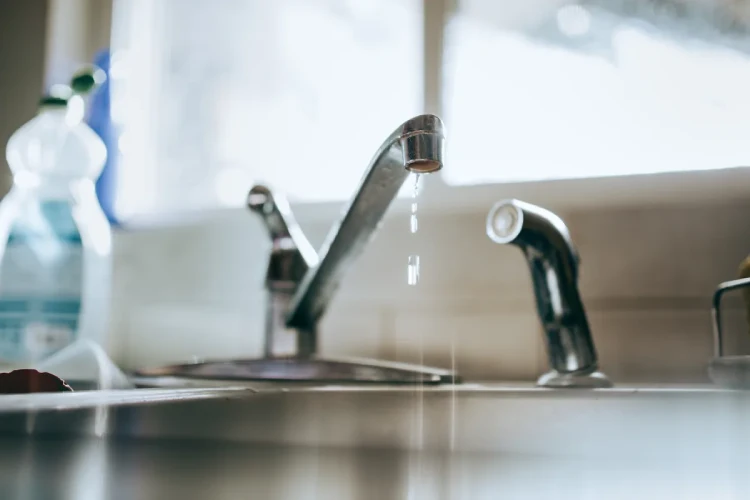
Tips To Lower Your Water Consumption
Now that we know more about water waste, let's do something about it. Start by reducing excessive water usage in your home. Here are a few tips to lower your water consumption — and your water bill.
- Avoid long showers: Decreasing your showering time from 15 minutes to eight minutes could save up to nearly 80 gallons of water.
- Turn off the water when brushing: Keeping the water off during the two minutes of brushing your teeth could save 4 gallons of water.
- Fix that dripping faucet: Dripping faucets can quickly eat into your utility bill, easily wasting over 100 gallons of water a month. If your faucet is dripping excessively, you may have a plumbing emergency.
- Run your dishwasher only when full: Running a dishwasher half full is a waste of water — fill it up before hitting the Start button.
- Don’t waste extra water: Have excess water? Don’t pour it down the drain! See if your plants need a bit of water or top off your pet's water bowl.
- Monitor your water consumption: Knowing your water usage is a great way to decrease energy consumption. Consider installing a water meter that you can monitor from your smartphone.
- Upgrade to efficient appliances: Installing a WaterSense-labeled showerhead, faucet aerator, and toilet in your home's main bathroom can have a big impact that pays for itself in as little as a year. It’s one of many smart plumbing trends you can employ.
- Take showers, not baths: Taking a bath utilizes much more water than a shower — opt for the latter to save money.
- Check washing machine load sizing: Ensure you select the proper load size on your washer so you don’t utilize more water than needed.
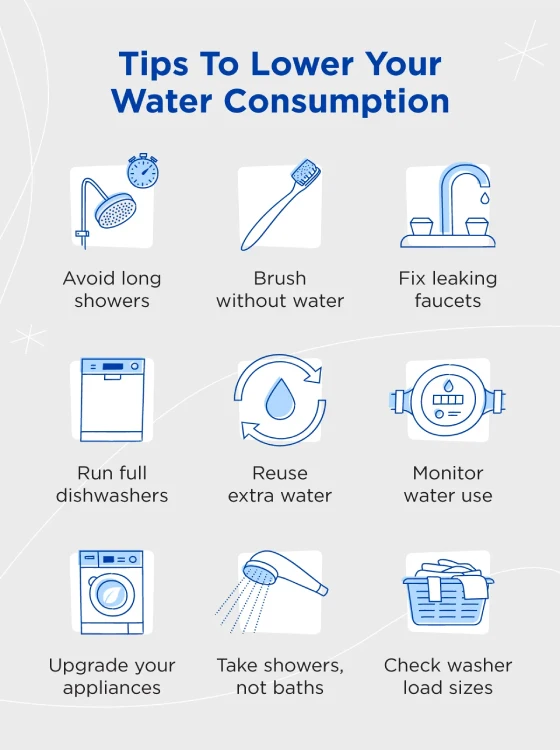
Take Control of Your Water Usage With Mr. Rooter Plumbing
According to water usage statistics, we utilize tons of water a year, and much of it is wasted. Don't be part of that unfortunate statistic. Contact your local Mr. Rooter Plumbing to see how you can increase efficiency and decrease your water bill with residential plumbing services.
With 200+ locally owned and operated locations and 50+ years in business, you can always trust Mr. Rooter Plumbing with top service professionals and upfront pricing. Plus, all work is backed by the Neighborly Done Right Promise™️.
Source Note: Several data points presented in this article were gathered from the U.S. Geological Survey’s Estimated Use of Water in the United States in 2015 publication, released in 2018. This publication is the most recent data from the USGS as of this article’s publishing.

